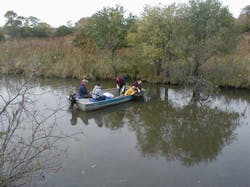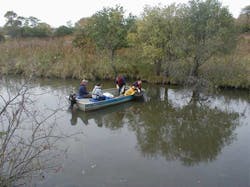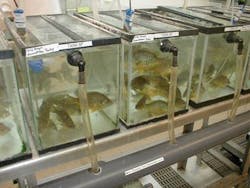Nov. 11, 2013 -- The presence and biological effects of endocrine disrupting chemicals (EDCs) in Chicago-area waterways have recently been chronicled by three university researchers and a Metropolitan Water Reclamation District of Greater Chicago (MWRD) scientist to determine the impact of the unregulated compounds on urban waterways.
EDCs are found in many household and industrial products such as pharmaceuticals and personal care products. Because there is uncertainty on the overall impact of these unregulated chemicals on urban waterways, Thomas Minarik, MWRD Senior Aquatic Biologist, and others began studying the presence and biological effects of these chemicals throughout the waterways. Joining Minarik were Dr. Heiko Schoenfuss, St. Cloud State University in St. Cloud, MN; Dr. Dalma Martinovic-Weigelt, University of St. Thomas in Minneapolis, MN; and Dr. Melissa Schultz, College of Wooster in Wooster, OH.
"Most endocrine active compounds begin their journey into the aquatic environment in our own households and with our own actions. Every one of us can contribute to a reduction of these compounds in the wastewater stream by being more aware of the products used and their appropriate means of disposal," said Dr. Schoenfuss.
Many EDCs can be controlled by properly disposing pharmaceuticals and pet waste, using bio-degradable cleaning supplies, and discontinuing the use of soaps that contain antibacterial agents. The team collected and archived more than 1,000 water samples from 45 locations on the waterways from January 2009 through July 2012. Approximately 3,000 fish were analyzed, and a mobile laboratory trailer was used to investigate sources of EDCs.
"Collaboration between academia and industry was exemplary for this study, as both complimented one another toward the challenge of understanding this complex issue for an entire urban area," said Minarik.
See also "Water resources, environment benefited by National Prescription Drug Take-Back Day."
###





